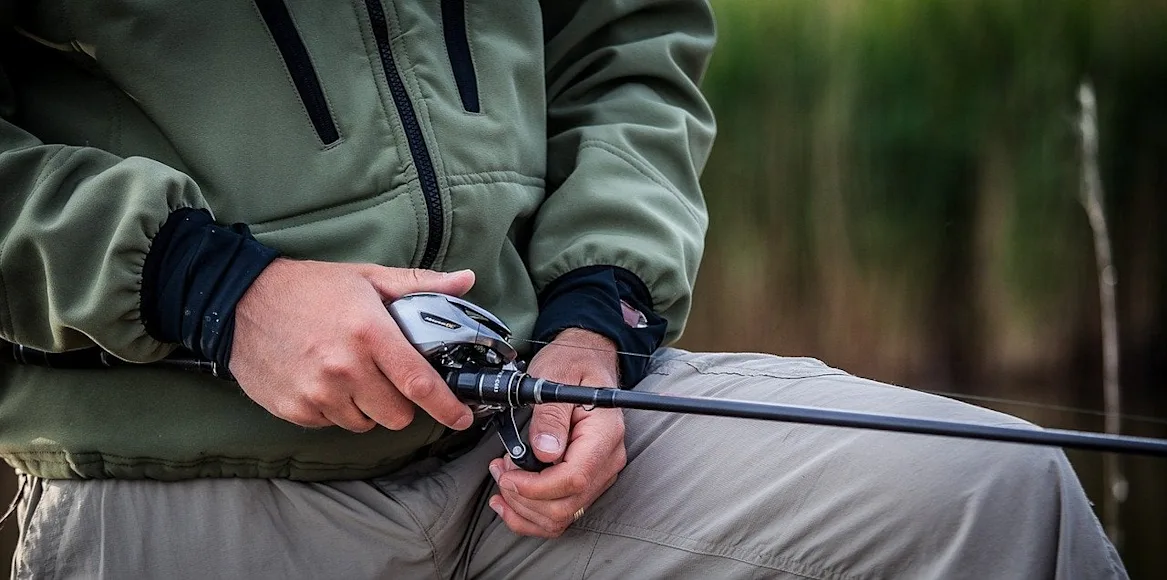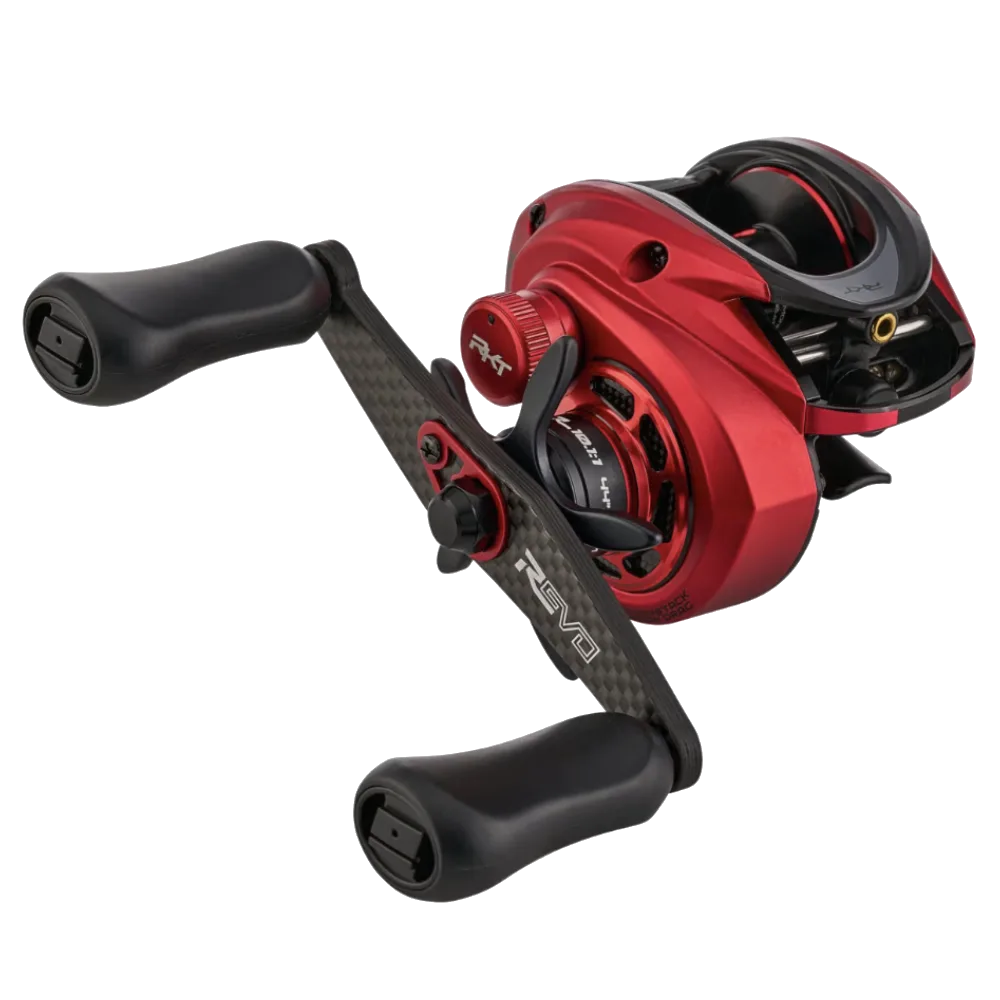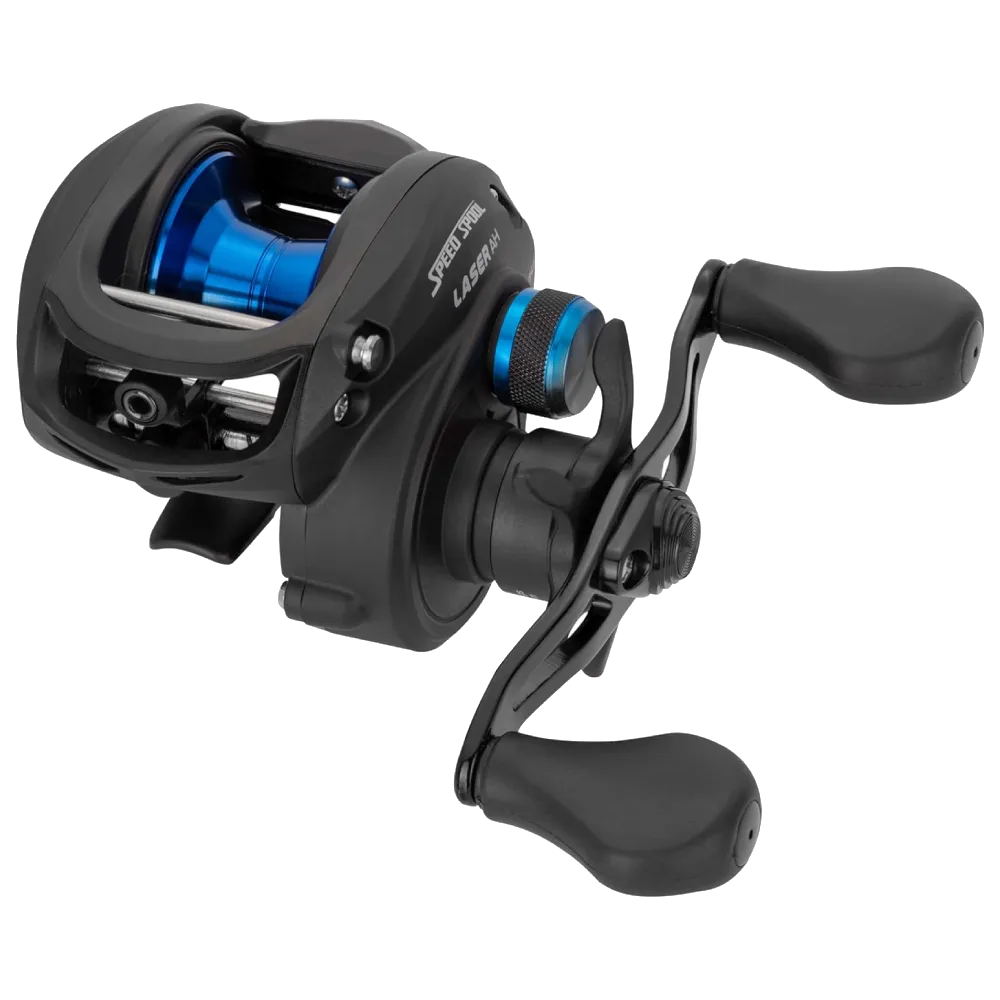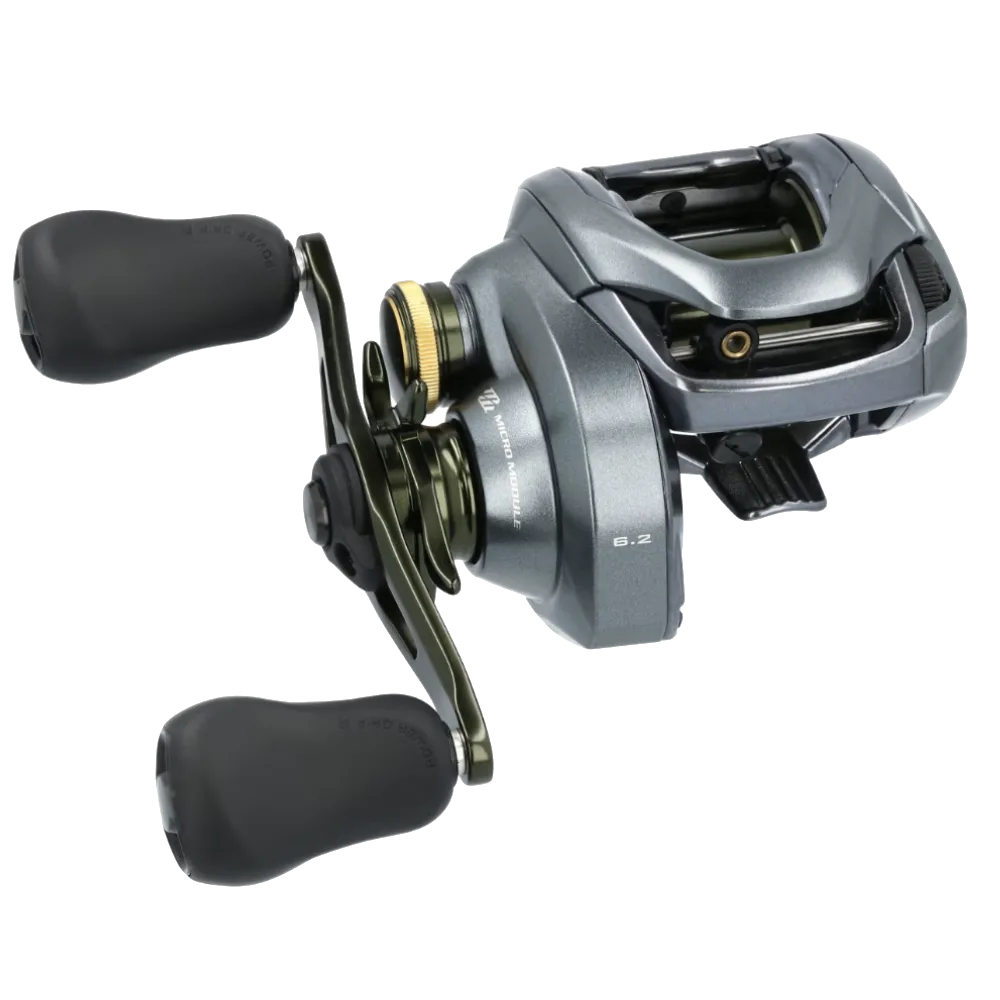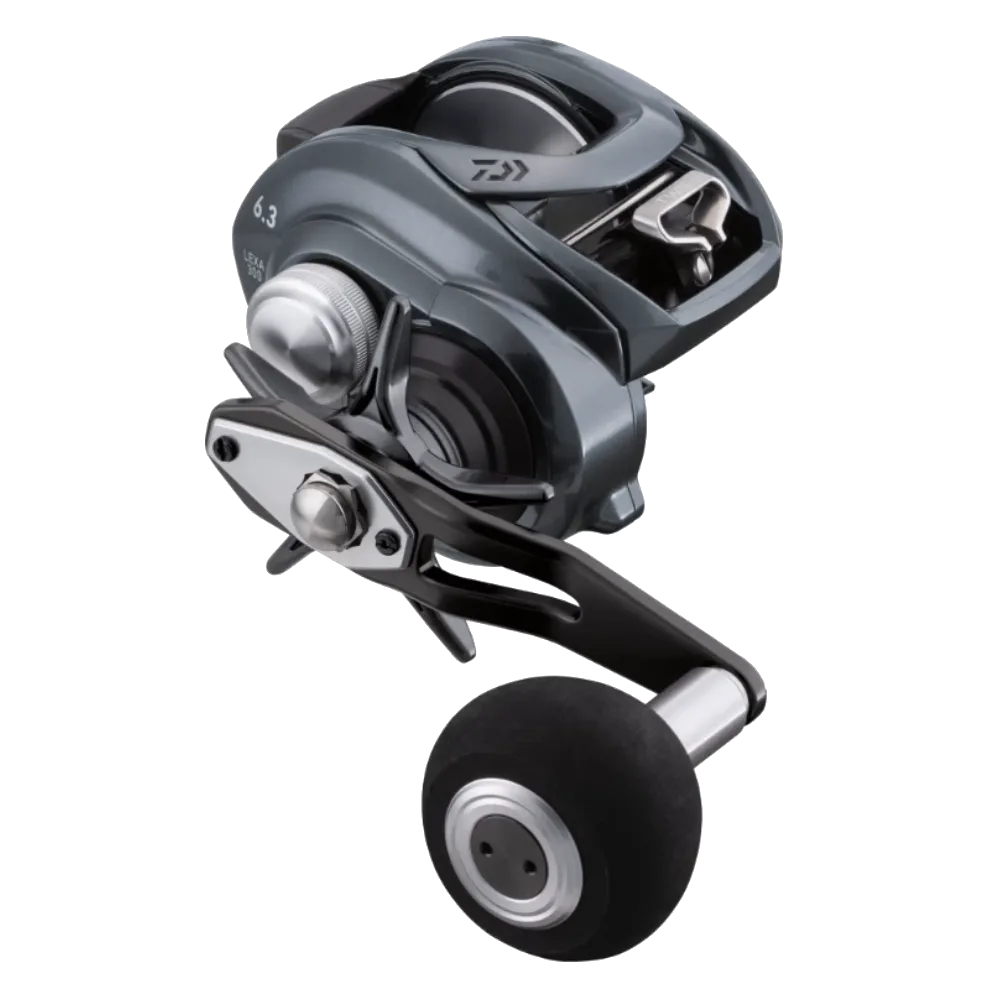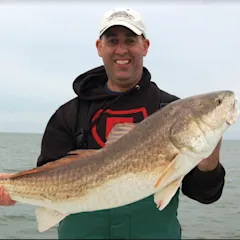We may earn revenue from the products available on this page and participate in affiliate programs. Learn more
When I first started fishing in the 1980s, baitcasting reels were mysterious and a little bit daunting. The old-timers told us tales of monstrous “bird’s nests” and “backlashes,” which they euphemized as “professional overruns.” Because the spools of baitcasting reels spin freely—unlike that of spinning reels—any difference in speed between the spool and the line leaving it can result in a massive tangle. Furthermore, they were only suited for casting comparatively heavy lures at that time. So the choice of baitcaster versus spinning reel often boiled down to just lure size.
Fortunately, the old-timers’ tales and warnings proved to be a bit overblown. Yes, backlashes occurred, but all types of fishing reels have their own sets of problems. Today, even mid-priced reels are better than the state-of-the-art models from when I started and the best baitcasting reels—from Abu Garcia, Daiwa, Lew’s, and Shimano—are works of art.
Best Overall: Abu Garcia Revo Rocket
Best for Big Baits: Daiwa Lexa TWS 300
Best Budget: Lew’s American Hero Speed Spool
Best Saltwater: Shimano Curado DC
Best Lightweight: Lew’s HyperMag
Best Braking System: Shimano Bantam
Best Mid-Range: Daiwa Tatula 100
Best Overall: Abu Garcia Revo Rocket
Specs
Gear Ratio: 10.1:1
Bearings: 10+1
Weight: 7.5 oz
Pros
Lightning fast retrieve
Smooth cranking power
Compact but durable
Cons
All focus is on speed
Abu Garcia has been a leader in producing some of the best fishing reels in the world for decades. They were at the front of the pack when it came to escalating the gear ratio arms race, setting the standard at 7:9:1 before hitting 9:1 and now 10:1. The Revo Rocket weighs a mere 7.3 ounces. Yet, it packs in 10 quality bearings plus a roller bearing. That keeps it smooth at any speed without sacrificing the torque needed to winch on big fish. The reel’s ability to cast exceptionally light lures without risk of backlashing makes it an excellent choice for pitching Senkos and Texas Rigs. It also serves well for casting light topwater baits, even into the wind.
If there’s one downside to it, it’s the heavy focus on speed. There are less options for slower presentations or for pulling big fish out of heavy slop. However, this reel will work exceptionally well for most modern bass fishing scenarios. We like that the Revo Rocket is so readily available in left-hand and right-hand retrieve versions. We also like the look of this reel. That blazing red helps connote the blazing fast speed.
Best for Big Baits: Daiwa Lexa TW
Specs
Gear Ratio: 5.3 through 8.1
Bearings: 8+1
Weight: 12 oz
Pros
Lightweight but heavy-duty
Consistent casting
Single knob allows for greater precision
Cons
Fewer gear ratio options for lefty anglers
Heavy
Daiwa reels have a devoted following among swimbait and glide bait enthusiasts worldwide. Their Lexa series incorporates the “T-shaped” line guide, allowing the line to flow smoothly. This maximizes distance, reduces backlashes, and prevents sudden lurches that may cause your line to seize up and snap.
The Daiwa Lexa comes in 6.3:1, 7:1, and 8:1 gear ratios. Unfortunately, only the middle speed is represented in a left-hand retrieve. This reel is notable for its single-knob 70mm adjustable power handle. This handle allows anglers to execute precise quarter and half-turns to eke every bit of life out of their oversized lures. This eight-ball-bearing tool has the heft and construction to handle the largemouth of a lifetime or the massive striper that happens to wander into your strike zone.
Best Budget: Lew’s American Hero Speed Spool
Specs
Gear Ratio: 7.5:1
Bearings: 4+1
Weight: 7 oz
Pros
Price
Simple design and operation
Comfortable bowed handle and Lew’s paddle knobs
Cons
Obviously not as high-tech as other offerings
Lew’s venerable brand of baitcasting reels has become incredibly popular over the last decade. This is due to their versatility, durability, and the company’s values. For only $64.99, this budget fishing reel is anything but bare bones.
All three models weigh a mere 7.2 ounces. Each has a total of five bearings. The reel features a comfortable bowed handle and two paddle knobs. This combo will fit a wide range of hand sizes from little kids up to full-blown Bubbas. Whether you’re just starting out or need to develop a 10-reel arsenal, this budget-minded option still delivers. Making it even better, a portion of the profits from every reel goes to support U.S. military veterans.
Best Saltwater: Shimano Curado DC
Specs
Gear Ratio: 6.2 through 8.5
Bearings: 6+1
Weight: 7.8 oz
Pros
Spool speed measured every 1/1000 of a second
Easy casting with fewer backlashes
Low maintenance despite computer components
Cons
11l bs. of drag, at a high price point
Most of the past attempts at creating computer-controlled reels aimed at gauging how much line was out. Most of them proved to be unpopular with ardent bass anglers. Shimano was finally the one to figure out the proper formula and design. One of the more brilliant aspects of these reels is that no batteries are required. The turning of the handle generates the electrical charge to power the microchip. We appreciate there not being any extra maintenance or tiny watch batteries that are hard to install.
With only minimal angler input, a microcomputer assesses spool speed every 1/1000 of a second to adjust for lure weight and wind. While it doesn’t eliminate backlashes, they occur far less frequently. That means you can throw light lures directly into a headwind without the fear of blowing up your entire spool. Once you get used to the distinctive “whir” while casting, you’ll find the Shimano Curado DC indispensable. It comes in 6.2:1, 7.4:1, and 8.5:1 gear ratios, all of them available in both left and right-handed retrieves. Check out the rest of the best Shimano reels, according to our experts.
Best Lightweight: Lew’s HyperMag
Specs
Gear Ratio: 7.5:1 and 8.3:1
Bearings: 10+1
Weight: 5.2 Ounces
Pros
Unbelievably lightweight
Super smooth
Easy to use
Cons
Expensive
The HyperMag weighs a trim 5.2 ounces. That may not seem like a vast difference from many 7- and 8-ounce reels, but it makes a huge difference. Some reels that are lightweight feel junky. That’s not the case with the HyperMag. It has a one-piece magnesium frame that feels incredibly solid. We also like the ergonomics of this reel’s handle. It has a nice texture that’s easy to grip when your hands are wet. It is probably better suited for experienced anglers thanks to the centrifugal brake system. However, we appreciate Lew’s added features like a quick attachment system for fishing line that makes spooling much easier.

Due to its one-piece construction and high-end components, this reel has a premium price tag. It starts at $350, a hefty investment for a bass fishing reel. However, that’s our only real complaint about it. Lew’s offers both right and left-handed versions, so there’s an option for everyone. The stainless steel bearings also make it incredibly smooth to operate. This reel is the total package for anyone wanting all-day casting comfort.
Best Braking System: Shimano Bantam
Specs
Gear Ratio: 6.2 through 8.1
Bearings: 8+1
Weight: 7.6 – 7.9 oz
Pros
Excellent ergonomics
Quality construction
Versatile for a variety of baits and scenarios
Cons
Expensive
The Bantam has been wildly successful for Shimano, and we’re not surprised after we first tested one at ICAST a few years ago. It’s a highly versatile lineup for bass anglers who want to do a little bit of everything with one reel. It can flip and pitch, crank, handle big swimbaits beautifully, and rip spinnerbaits and buzzbaits. This is an incredibly well-balanced reel with a super low profile. It is easy to palm with one hand. Shimano used some excellent bearings here. It’s a super smooth cast and retrieve. The SVS Infinity braking system also plays a part in that. I found it very easy to adjust on the fly. It’s a centrifugal brake, but probably one of the best available today. It functions at a high level that makes it a little easier to learn.

Unfortunately, due to the quality of the materials, the Bantam is another reel with a premium price tag. At $300+, depending on the retailer, most anglers will probably only be able to afford one. However, considering the variety of techniques it covers, there is some excellent value here. This is also a solid choice for anyone wanting something that’s built tough. Shimano’s one-piece Hagane metal body manages to be both lightweight and durable simultaneously.
Best Mid-Range: Daiwa Tatula 100
Specs
Gear Ratio: 6.3:1 through 8.1:1
Bearings: 7+1
Weight: 7 Ounces
Pros
Long casts
Extremely durable design
Variety of applications
Cons
Some plastic components
Finding a solid, mid-tier priced baitcaster can be something of a challenge. So many reels today are either cheap budget options or super high-end. Fortunately, Daiwa’s Tatula 100 fits comfortably somewhere in the middle at around $180. Some good deals can be had on this reel if one catches a sale at the right time. This reel has a durable aluminum frame that will withstand years of abuse. I love the feel of this reel’s thumb bar. It’s one of the most ergonomic available today, making it easy to thumb the spool for precision casting. Daiwa offers a nice variety of gear ratios to cover everything from jigging and cranking to jerkbaits and spinnerbaits. Eight total bearings also make for a smooth retrieval. Daiwa hasn’t been content to rest on its laurels with the Tatula 100, either. They periodically make subtle improvements to the drag system or gearing. It’s a reel that keeps getting better with each new model.

Few reels receive as much universal acclaim as the Tatula 100. This is an excellent option for any angler who wants something more advanced but isn’t ready to drop $300 on a high-end reel. Plenty of other avid anglers stick with the 100 because it is a workhorse of a reel. Also, this has nothing to do with its fish-catching ability, but the Tatula 100’s slick black styling makes it one of the nicest-looking baitcasters made today.
What Has Changed Over the Years in Baitcasting Reels
Modern improvements in baitcasting reels are not just a matter of better components. Reels have become more specialized, where appropriate, and a better fit for each angler’s needs. Historically, the handle on most baitcasters was on the right side. This differs from most spinning reels, where the handle can be switched from one side to the other. That meant that the typical right-handed angler would have to cast with their dominant (right) arm, and then switch the rod to the other hand to start the retrieve. For lures that required immediate retrievals, this was a huge disadvantage. Similarly, if a bass ate the lure on the way down, it could often expel it before the angler could feel the strike.
Second, there is now a far greater range of gear ratios, from super-slow all the way up to a blazing 10:1. A generation ago, most baitcasting reels were in the 5:1 to 6:1 range. Today’s baitcasting reels, even saltwater baitcasters, are made of varying materials. They are typically much lighter than their predecessors, even if they feature more bearings. This allows them to balance with today’s increasingly lightweight baitcasting rods.
Finally, there are plenty of baitcasters that serve a wide variety of purposes and applications. But there are specialty reels made for techniques like “Bait Finesse” and others reserved for specific line types, such as braid.
How We Tested Baitcasting Reels
When making our picks for the best baitcasting reels, we considered many factors, including the quality of the construction, the gear ratio offered, and the number of bearings offered in each reel. We also considered factors like speed, power, and how smoothly each reel casts and retrieves.
Additional factors considered included the variety in each lineup. We’ve handled every nearly baitcaster made today at trade shows like ICAST. This has given us insights into how the quality and construction compare across brand names. We have also tested many of these rods to evaluate the casting ability and ergonomics. Finally, we examined the prices of each reel. It would be easy to fill this list exclusively with high-end reels. However, we wanted to ensure there was at least one option for every angler’s budget, be it high or low.
What To Consider When Choosing a Baitcast Reel
The technology behind modern fishing reels is constantly evolving. Some of it happens so fast that it’s tough to keep up with the latest trends. However, some features have remained mostly the same over the last 40 years and are worthy of consideration. A quality baitcaster is usually a significant investment. Thus, it’s worth putting in the extra effort to ensure the design will fit an angler’s style and target species.
Ergonomics
While most manufacturers still offer some round body reels, the significant shift has been towards streamlined low profiles. These are much more ergonomic in the hands, making them comfortable for all-day angling. Advancements in materials have also led to reels becoming lighter and lighter. It’s not uncommon to find high-end baitcasters that weigh only 7 or 8 ounces. Lighter weights also contribute significantly to the comfort of the reel when used for extended periods.
Brake Systems
These systems keep the line on the spool and prevent backlashes. Magnetic brakes are common and excellent for beginners. They utilize a simple dial system that adjusts the magnet’s distance from the spool, thereby controlling tension. Centrifugal brakes have brake pads that maintain pressure on the spool. They are slightly harder to adjust, making them better for more experienced anglers.
Digital braking systems have a tiny microcomputer inside the reel that automatically monitors and controls spool speed. Unlike other brakes, DC brakes require little thumb pressure to prevent backlashes. The downside is that digital brakes are heavy and expensive. Some anglers may not like the high-pitched digital whine these reels make when casting.
Gear Ratios
Gear ratios refer to how many turns the spool makes for each turn of the handle. The higher the gear ratio, the faster it will retrieve. Ratios of 7:1 or higher are extremely common these days and will fit most angling scenarios. Slower ratios, down to 5:1 or less, have fallen out of style considerably. However, a lower ratio works well for jigging or deep diving crankbaits. Lower ratios also provide more torque for catching large or hard-fighting species.
Bearings
Most reel manufacturers heavily tout their bearing counts in their marketing. This is because more bearings usually equate to a smoother reel. However, that’s not always a hard and fast rule. We’ve seen reels with high bearing counts that were rough and vice versa. In many instances, the quality of the bearings matters more. Stainless steel or ceramic bearings cost more but usually operate much better. The right bearing system can also extend the life of a reel significantly.
FAQs
Q: When is baitcasting better than spinning?
A decade or two ago, many bass anglers used 10-pound test line as the swap-over point, going with spinning for anything at or below that mark and baitcasting for anything at or above that mark. Now there are powerful spinning tools and baitcasters that excel at finesse.
If you’re not an experienced caster, you may want to err toward spinning when casting into a wind or using lighter lures, but that’s no longer a hard and fast rule. Baitcast reels to allow you to make more casts over a day. This is because you disengage the spool with a press of your thumb, rather than having to flip a bail. Most serious flippers and pitchers also use baitcasting gear because you can re-engage the reel more quickly, allowing you to set the hook on a fish that eats your lure before it hits the bottom.
Q: What baitcasters do the pros use?
For many years, Shimano, Daiwa, Abu Garcia, and Quantum were the most frequently cited among tournament winners. However, Lew’s has come on strong and can now be found in many professional boats. Other brands, including 13 Fishing, KastKing, Ardent, Favorite, Okuma, and Duckett, are also coming on strong. Even brands that have historically been saltwater-focused, like Penn, have viable tools for the bass world.
Q: What is the best baitcasting reel on the market?
This answer is highly subjective. However, it’s hard to go wrong with anything from Abu Garcia, Lew’s, Daiwa, or Shimano. While there are many more expensive options than what we’ve highlighted here, most anglers can get a durable and tournament-ready model for less than $200. In truth, there’s no single correct answer, and ultimately your choice should be determined by the features that matter most to you and your budget.
Final Thoughts
All the reels we’ve featured here today make excellent choices for baitcasting reels. However, the Abu Garcia Revo Rocket won us over with the quality of its construction and speed. No one else is thinking outside the box quite like Abu Garcia right now. Our runner-up is the Daiwa Tatula 100 for its fair price point and versatility. It’s a stylish reel for the modern angler that will last through years of use and abuse.
Why Trust Us
For more than 125 years, Field & Stream has been providing readers with honest and authentic coverage of outdoor gear. Our writers and editors eat, sleep, and breathe the outdoors, and that passion comes through in our product reviews. You can count on F&S to keep you up to date on the best new gear. And when we write about a product—whether it’s a bass lure or a backpack—we cover the good and the bad, so you know exactly what to expect before you decide to make a purchase.

